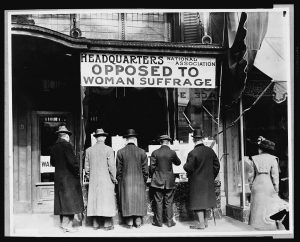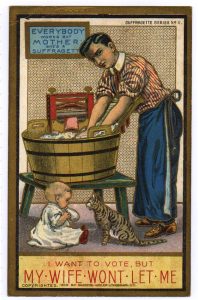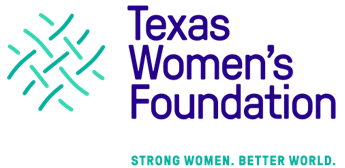This handout from the national suffrage opposition organization, which warned women might place government under “petticoat rule” if they won the right to vote, was widely used by state affiliates. Public domain image.
In November 1913, a group of Houston businessmen and public officials dressed in drag as suffragists marched downtown in a derogatory mock parade staged by a local men’s social club. Some “marchers” even drew guns and pretended to shoot down suffrage opponents along the route, antics which parade watchers found highly amusing.
The incident was extraordinary in ugliness, but not in uniqueness. Opposition to suffrage existed widely from the earliest days of the movement, but it began picking up steam in 1912 following the creation of the National Association Opposed to Woman Suffrage (NAOWS), which was headquartered in New York and had chapters in at least 25 states.
While it’s difficult to comprehend through a contemporary lens, most anti-suffrage efforts were led by women—such as Pauline Kleiber Wells, the head of the Texas Association Opposed to Equal Suffrage (TAOWS), one of the most influential state chapters of the NAOWS. Pauline was married to James Wells, Jr., a powerful South Texas politician who was also a vocal suffrage opponent.

On the left: Men reviewing materials from the National Association Opposed to Woman Suffrage. Image from the Library of Congress.
Although ultimately unsuccessful, the TAOWS did impede progress to secure votes for women in Texas, particularly in 1919 when anti-suffragists helped defeat a state constitutional amendment granting women full suffrage [link to Timeline].
What was behind the opposition?
The arguments against suffrage varied. Some opposed suffrage for religious reasons, or because they believed that giving women an equal voice in government would result in widespread neglect of woman’s primary responsibilities, which were the care of home and children. Others felt that women’s “sacred” role as the keeper of the home made them “above” the dirty business of government and politics, and that the right to vote would make women lose this privileged status.
In many cases, anti-suffragists believed that extending the vote to women would lead to voting rights for non-white minorities and other “undesirables” who might “take over” the government if they got too much power.

On the left: Anti-suffrage media played upon fear of disruptions to the established social order, and were typically manipulative, misleading, demeaning to women, or even violent. Image from the National Women’s History Museum.
Additional Learning:
“Opposition to Suffrage” – from Crusade For the Vote/the National Women’s History Museum







